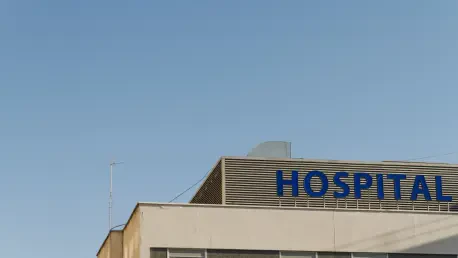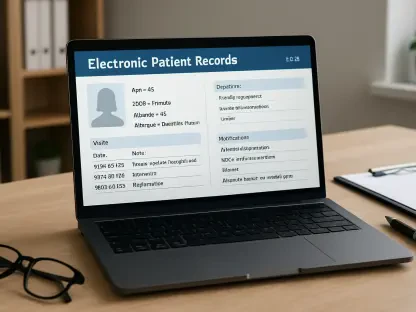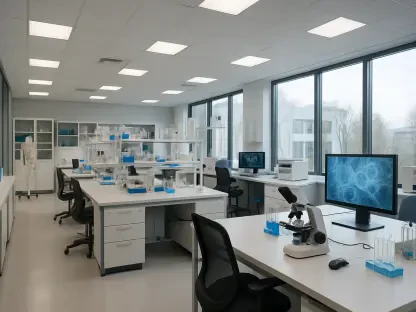In the heart of rural India, a significant development is unfolding that could reshape healthcare access for thousands of underserved residents, particularly in Fatehpur Billoch village near Ballabgarh. Here, a new 15-bed hospital under the esteemed All India Institute of Medical Sciences (AIIMS) banner is on the verge of opening, promising to bring critical medical services to a region long plagued by inadequate facilities. This initiative, driven by a pressing need to bridge healthcare gaps, has sparked hope among locals who currently face daunting journeys for emergency care. With a completion timeline accelerated to meet urgent demands, the project represents not just a building, but a lifeline for communities struggling with the absence of skilled doctors. This endeavor highlights a broader movement to extend premier medical institutions into rural landscapes, potentially setting a precedent for similar efforts across the country.
Addressing Rural Healthcare Gaps
A New Facility for Urgent Needs
The construction of the AIIMS hospital in Fatehpur Billoch, spanning nine acres of land donated by the village panchayat, is a beacon of progress for a population of over 30,000, along with thousands more from nearby villages like Ladhauli and Panhera Kalan. With a sanctioned budget of Rs 20 crore, the project, managed by the Central Public Works Department, has seen rapid advancements since work began late last year. The basic structure stands ready, with interior tasks such as plastering and equipment installation in full swing. This 15-bed facility will house four doctors’ rooms, two outpatient departments, a pharmacy, a general ward, and staff residences, all tailored to meet local needs. The absence of an MBBS doctor in the area has long forced residents to travel to distant hospitals in Ballabgarh or Faridabad, often under dire circumstances. By providing quality care locally, this hospital aims to eliminate such hardships, especially during emergencies like childbirth, transforming the healthcare landscape for these rural communities.
Challenges and Accelerated Efforts
Despite the optimism surrounding the hospital’s nearing completion, the journey has not been without hurdles, as delays initially pushed back the expected opening. However, a renewed push to expedite critical areas like consultation rooms reflects a strong commitment to delivering services at the earliest opportunity. Hospital management has urged contractors to prioritize essential spaces, ensuring that even partial operations can begin if full completion lags. This proactive approach underscores the urgency of addressing systemic healthcare disparities in rural regions, where access to timely medical intervention can mean the difference between life and death. The project’s accelerated timeline, now targeting an opening by the New Year, demonstrates a response to community needs over bureaucratic setbacks. As interior work progresses, the focus remains on creating a functional facility that can immediately alleviate the burden of travel for emergency care, setting a model for how infrastructure projects can adapt to pressing public health demands.
Community Impact and Future Prospects
Voices of Hope from the Ground
The anticipation among Fatehpur Billoch residents is palpable, with many expressing relief at the prospect of accessible healthcare after years of struggle. Local voices, such as that of Jagdish Goyal, highlight the transformative potential of having skilled doctors nearby and the added benefit of direct referrals to AIIMS Delhi for complex cases. This connection to a premier institution offers a safety net previously unimaginable for rural families. The sentiment is echoed across surrounding villages, where the lack of nighttime medical services has often led to tragic delays in treatment. Even as construction timelines have shifted, the community’s optimism remains unshaken, fueled by the promise of a facility that caters directly to their needs. This hospital is seen not just as a building, but as a symbol of equity, bringing high-standard care to those historically left behind by urban-centric medical systems, and fostering renewed trust in public health initiatives.
A Step Toward Broader Equity
Beyond the immediate benefits for Fatehpur Billoch and its neighbors, the AIIMS hospital project signals a pivotal shift in how rural healthcare disparities are addressed at a national level. Insights from officials, including Assistant Professor Dr. Ramesh Harshal Salve from AIIMS Ballabgarh, confirm that the structure is nearly ready, with full completion expected by late December or early January. Recent inspections by senior faculty have further emphasized the need for swift finalization of key areas to launch services. This initiative aligns with a growing trend of extending top-tier medical institutions into underserved regions, aiming to reduce the urban-rural divide in healthcare access. The hospital’s impact will likely inspire similar projects, encouraging policymakers to prioritize infrastructure that directly uplifts community well-being. As a tangible outcome of collaboration between local governance and central authorities, this facility stands as a testament to what targeted efforts can achieve in narrowing long-standing gaps.
Reflecting on a Milestone Achieved
Looking back, the journey of bringing an AIIMS hospital to Fatehpur Billoch was marked by both determination and delays, yet it culminated in a facility poised to redefine rural healthcare. The concerted efforts to overcome construction challenges and prioritize critical services spoke to a shared resolve among stakeholders to meet urgent community needs. Moving forward, the focus should shift to ensuring sustainable operations, from staffing with qualified professionals to maintaining equipment and resources. Policymakers might consider this project a blueprint for future rural health initiatives, emphasizing scalability and community involvement. Additionally, monitoring the hospital’s impact on health outcomes over the coming years could provide valuable data to refine such endeavors. Ultimately, this milestone lays the groundwork for equitable medical access, offering a model of how targeted infrastructure can address systemic disparities and improve lives in underserved regions.









